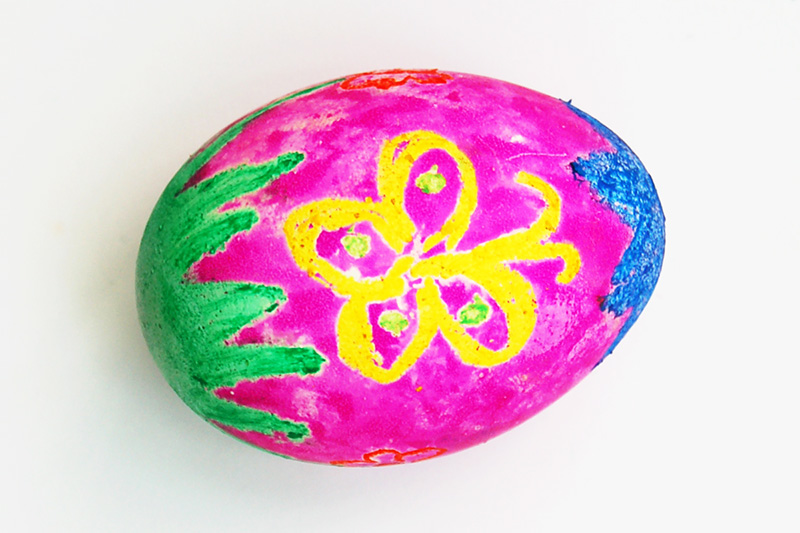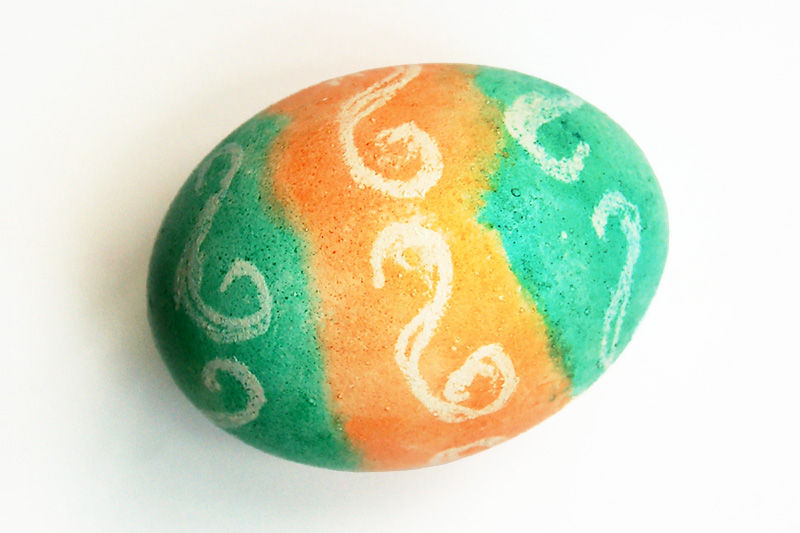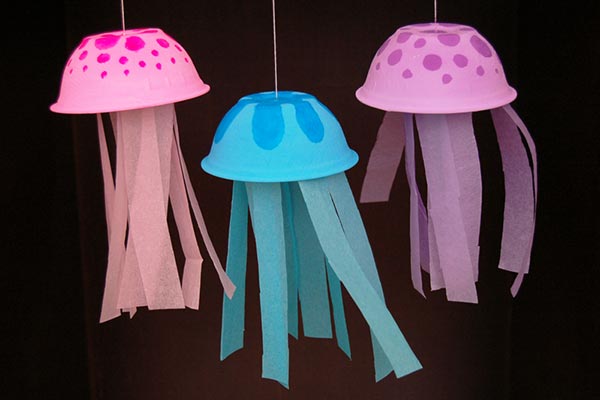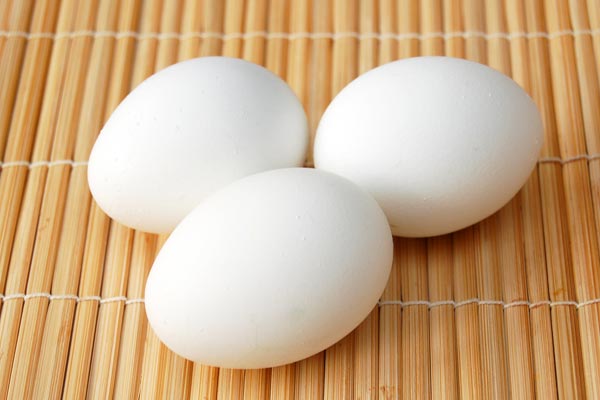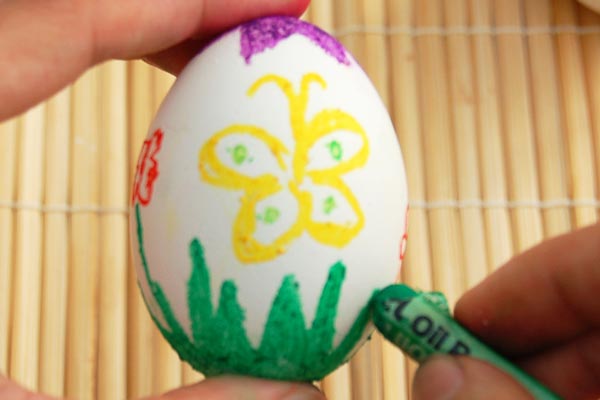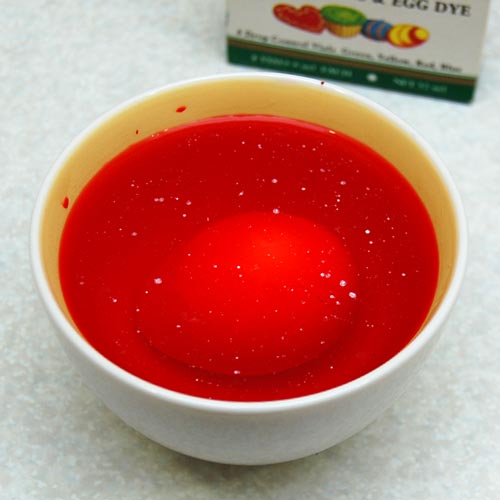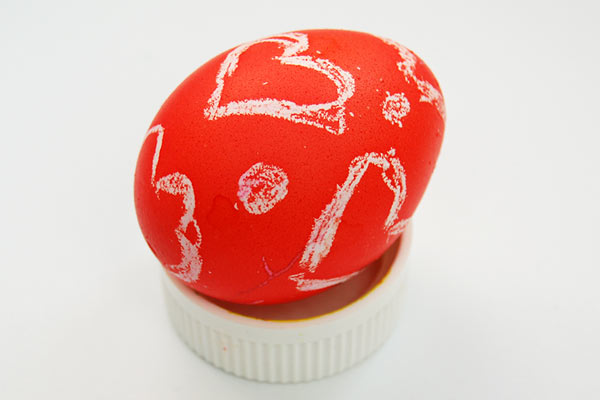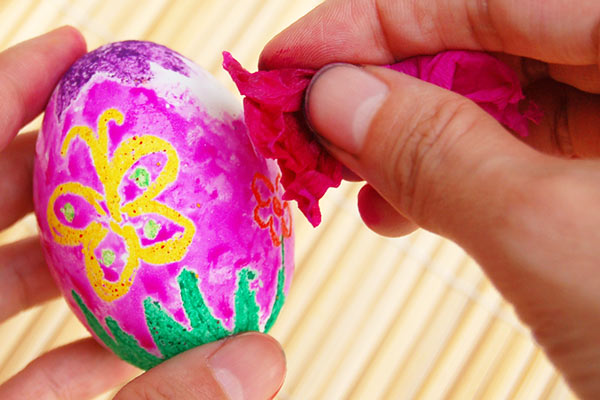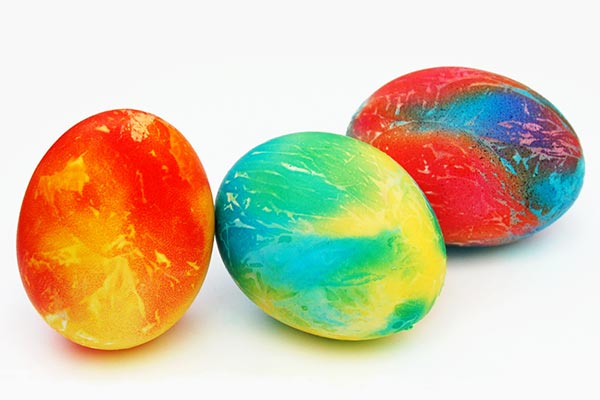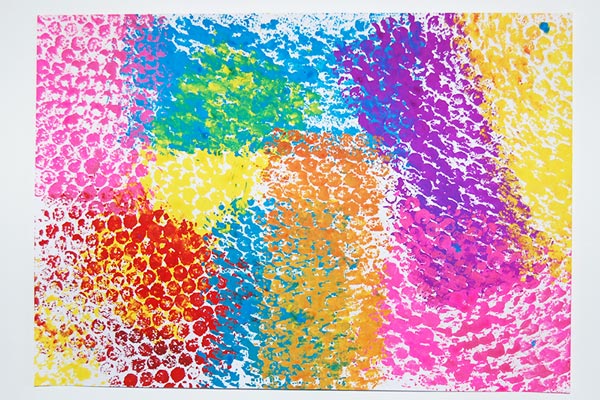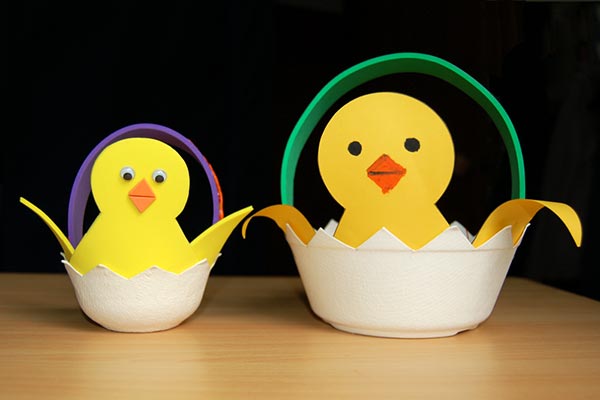Crayon Resist Eggs
Featured Crafts
Supplies Needed
- Hard boiled eggs or blown-out eggs
- Wax crayons or oil pastels
- Egg dye or crepe paper
- Paper cup or bowl
STEPS
1Prepare the eggs.
You can use either hard-boiled eggs or empty intact eggshells.
- Hard-boiled eggs - let the boiled eggs cool to room temperature.
- Empty intact eggshells - follow our instructions for blowing out eggs. Make sure the empty eggshells are clean and dry.
2Draw using crayons.
Draw lines and images on the egg using crayons or oil pastels. Use regular crayons, not the washable type.
a.) White crayon - white crayon is popularly used for doing crayon resist art. The seemingly invisible white outlines drawn on a white surface such as paper or eggs are later "magically" revealed when the surface is dyed or painted over with colors.
3Color the egg.
The eggs can be colored using any of the three methods:
Method 1: Dye the egg - make an egg dye by mixing ¾ cup warm water, 1 tablespoon white vinegar and 10 drops food coloring. Submerge the egg in the dye for at least 5 minutes.
A blown-out egg will float naturally. To remedy this, fill the egg with the dye before fully submerging it into the dye bath. You can also hold down the egg until the dye fills it entirely.
Method 2: Paint the egg - mix ¼ cup warm water, ½ teaspoon white vinegar and 6-10 drops of food coloring. Make several colors of this mixture.
Paint the egg using the colored mixtures—you can paint the entire egg with just one color or use multiple colors like I did. Just like in Method 1, the crayon lines will resist the colors.
Method 3: Stain the egg - cut or tear crepe paper into short strips. Take one strip, slightly crumple it and dip it into some water. Blot the wet crepe paper onto a paper towel to remove excess water.
Dab the wet crepe paper onto the egg. Color will be transferred from the crepe paper to the eggshell.
4Make more crayon resist eggs.
Have fun decorating more Easter eggs using the crayon resist methods described above.
You can also try other was to dye and decorate your Easter eggs:

